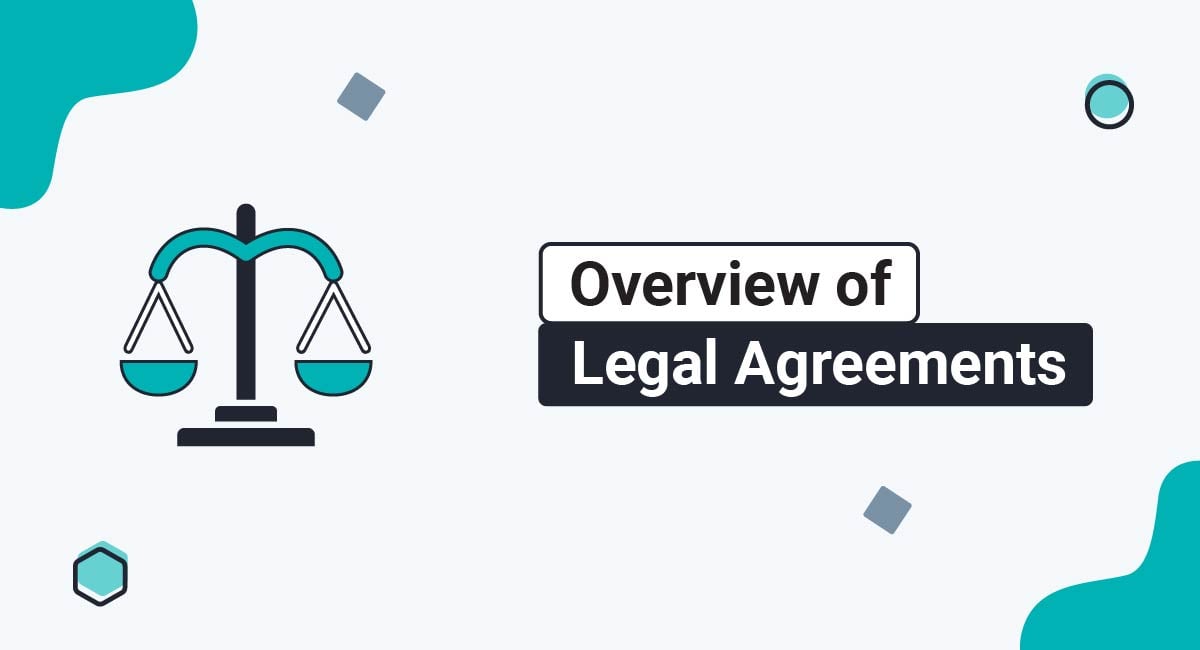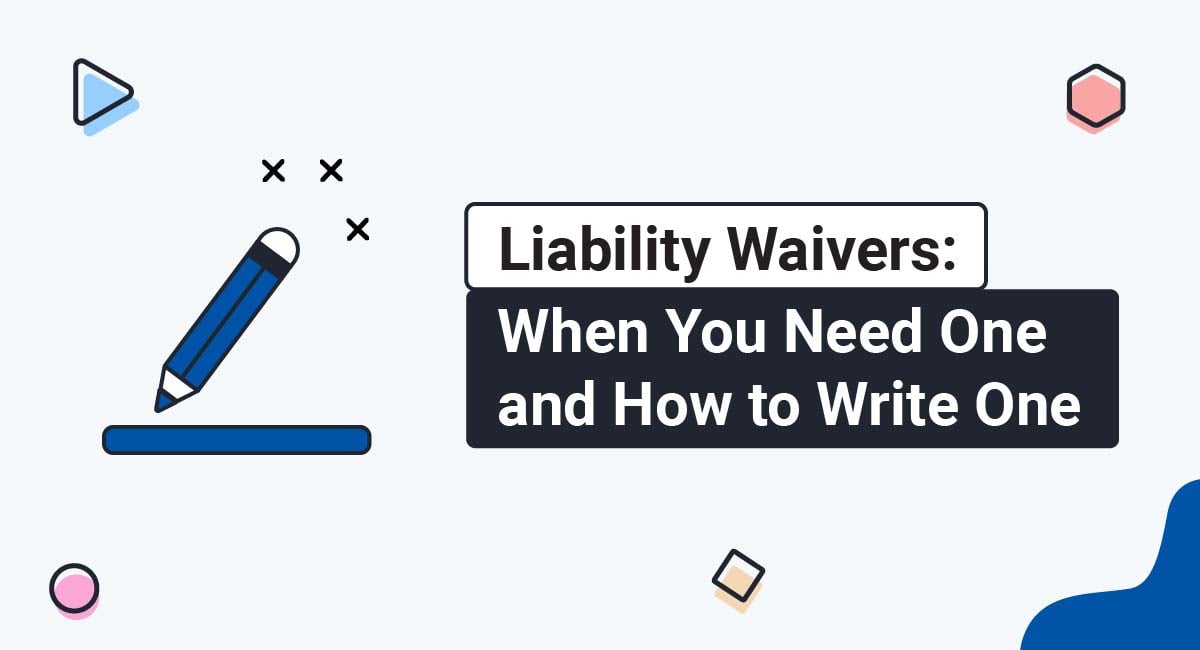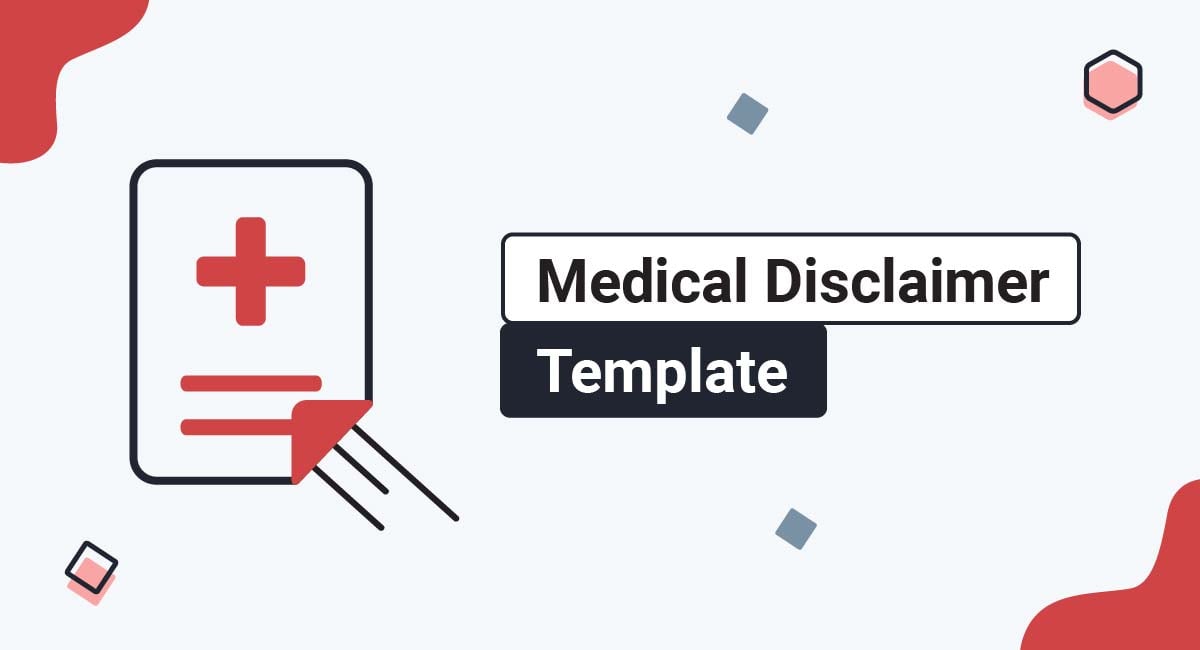Disclaimer Generator FAQs.
Have questions about our Disclaimer Generator before you sign up? Find the most popular questions answered below.
A disclaimer is a statement that works to inform your users of something important, while limiting your legal liability for something.
An example would be a "medical advice" disclaimer. This would let your users know that you aren't offering any type of formal medical advice, and if a user tried to sue you for using your content and getting negative results, you could show that you protected yourself with a disclaimer.
The main purpose of a disclaimer is twofold: first, disclaimers help to keep your users informed about important information and second, disclaimers help to limit your legal liability for your content, products or services.
Yes, the Disclaimer Generator from TermsFeed is free to use.
Our agreements and policies are free. We sell optional premium agreements with additional clauses (one-time fee) that can protect your business interests better.
Yes, the Disclaimer Generator from TermsFeed allows you to download the Disclaimer document as HTML, DOCX or Plain Text.
Use the Disclaimer Generator from TermsFeed to create a free Disclaimer agreement for your business.
Copying someone else's Disclaimer is illegal. Under copyright laws, legal agreements (including a Disclaimer) are protected by copyright.
Disclaimers are important because without them, you are opening yourself up to legal liability and may even be endangering others.
A lot of websites share content such as medical advice, financial opinions and DIY tips. Many products sold also come with claims such as "this will help you lose weight" or "this will boost your immune system."
It's very important for these websites and ecommerce stores to have disclaimers in order to:
- Let users and customers know that the content is not formal advice to be solely relied on, and
- Limit the liability of the poster or product-seller in the event someone relies on the advice or product with unsatisfactory results
Without disclaimers, you may end up with angry or even injured customers looking to sue you for your content or products. Disclaimers will help people know not to rely on your content to make drastic decisions, and that if they do, they are assuming the risks.
In some cases, certain types of disclaimers are a legal requirement. For example, in the U.S., the FTC requires disclosures of affiliate relationships as part of its rules regarding fair advertising.
Some third parties also require disclaimers. For example, if you work for a company and post personal opinions in your professional capacity, your company guidelines may require you to post a "personal opinions only" type of disclaimer.
In general though, it's up to you whether you want to have a disclaimer or not. But, there is no downside to having disclaimers, and a lot of potential upsides, including limiting your legal liability.
That depends on the nature of your business or content. There are a number of different types of disclaimers, and while each type will be similar in nature with others (most medical advice disclaimers are extremely similar to one another), they're all very different from one another in their purpose.
When you decide to use a certain type of disclaimer, do some research to see what other businesses are saying in their disclaimer. You'll likely find that the language is quite boilerplate.
No, not all disclaimers are the same. While most disclaimers do work to reach the same goal of informing users and limiting business liability, each different type of disclaimer addresses a completely different type of issue.
Some disclaimers address financial risk, attorney-client relationships, confidentiality of content, and personal opinions, while others disclose affiliate marketing relations, third-party content and offensive content.
You'll need to find the right disclaimer for your unique purposes and content.
What are some of the most common and important Disclaimers?
- Medical disclaimer
- No professional relationship disclaimer
- Content disclaimer
- Affiliate disclaimer
- Legal advice disclaimer
- Earnings disclaimer
- Results not typical disclaimer
- Errors and omissions disclaimer
A disclaimer will not keep you from being sued, but it may keep you from losing the suit. While anyone can sue you for anything, an individual will have a much more difficult time proving you should be held legally liable for something that you had clearly posted a disclaimer about.
For example, say you run a blog where you share financial opinions and are talking positively about a specific stock one week. One of your readers invests his life savings in the stock you liked, and the stock crashes. The individual wants to sue you for giving bad information that led to his loss. But you have a clear, concise disclaimer on your site or in your posts that makes it clear you're only sharing an opinion, are not giving professional advice, and you are not to be held liable for any financial losses anyone experiences as a result of reading your opinions and acting upon them. Even if you do get sued, the court would likely rule in your favor since your disclaimer made it clear you were not giving professional advice.
The thing to consider here is how easily readable your disclaimers will be.
If you have a number of things to disclaim, you can create a single disclaimer page with a number of easy-to-read, well-spaced paragraphs for each disclaimer. Use a clear heading for each disclaimer paragraph to show what type of disclaimer it is.
Don't just write one long paragraph disclaiming everything you can possibly disclaim. Your readers won't appreciate that, and the courts may hold your disclaimer to be unclear, thus not enforceable.
A disclaimer is a short, specific statement that informs users about something and helps to limit your liability.
A Privacy Policy is a legally-required legal agreement that informs your users about your privacy practices such as what personal information you collect, how you collect and use it, and what their user rights are regarding their personal information.
A disclaimer is a short, specific statement that informs users about something and helps to limit your liability.
A Terms and Conditions agreement also works to inform users and limit your liability, but it is far more broad in scope than a disclaimer.
While a disclaimer could be as short as one sentence, your Terms and Conditions agreement will likely be many paragraphs or pages long and will address a range of topics including: governing law, restricted uses of your site, termination of user accounts, payment terms, user-generated content, intellectual property and copyrights.
While you could do this, it isn't recommended and won't be adequate enough for some disclaimers, such as an affiliate disclaimer.
Privacy Policies are specific in what they deal with: Privacy.
Your disclaimer will likely get lost in your Privacy Policy, making it less noticeable and thus less likely to hold up in court.
If you do put your disclaimer in your Privacy Policy, make sure you put it somewhere else as well, such as on your individual webpages and linked to your website footer.
Yes, you should. But in most cases you should be sure to put it somewhere else as well, such as on your individual web pages and on its own web page that's linked to your website footer.
For some disclaimers, only putting it in your T&C won't be adequate enough, such as affiliate disclaimers.
bonus to putting your disclaimers in your T&C is that when you get agreement to your T&C, you'll be getting agreement to your disclaimers.
Some disclaimers come with rules for how they must be displayed, such as the FTC's rules for displaying affiliate disclaimers, but in general, make sure you display your disclaimer in a way that's:
- Easy to notice
- Easy to read
- Relevantly placed
For example, you can add a small disclaimer to the beginning of every blog post you make, or on each individual product page for every product you sell.
If you have a separate disclaimer page, add a link to it to your website footer so it's always available and somewhere where people know to look for important information.
Display your disclaimers:
- In places where users would want to see them, like on individual blog posts or product pages
- On a separate disclaimer web page that you link to your website footer
- In your Terms and Conditions agreement
Make sure you write your disclaimers in clear, easy to read language and make the disclaimers easy to locate.












